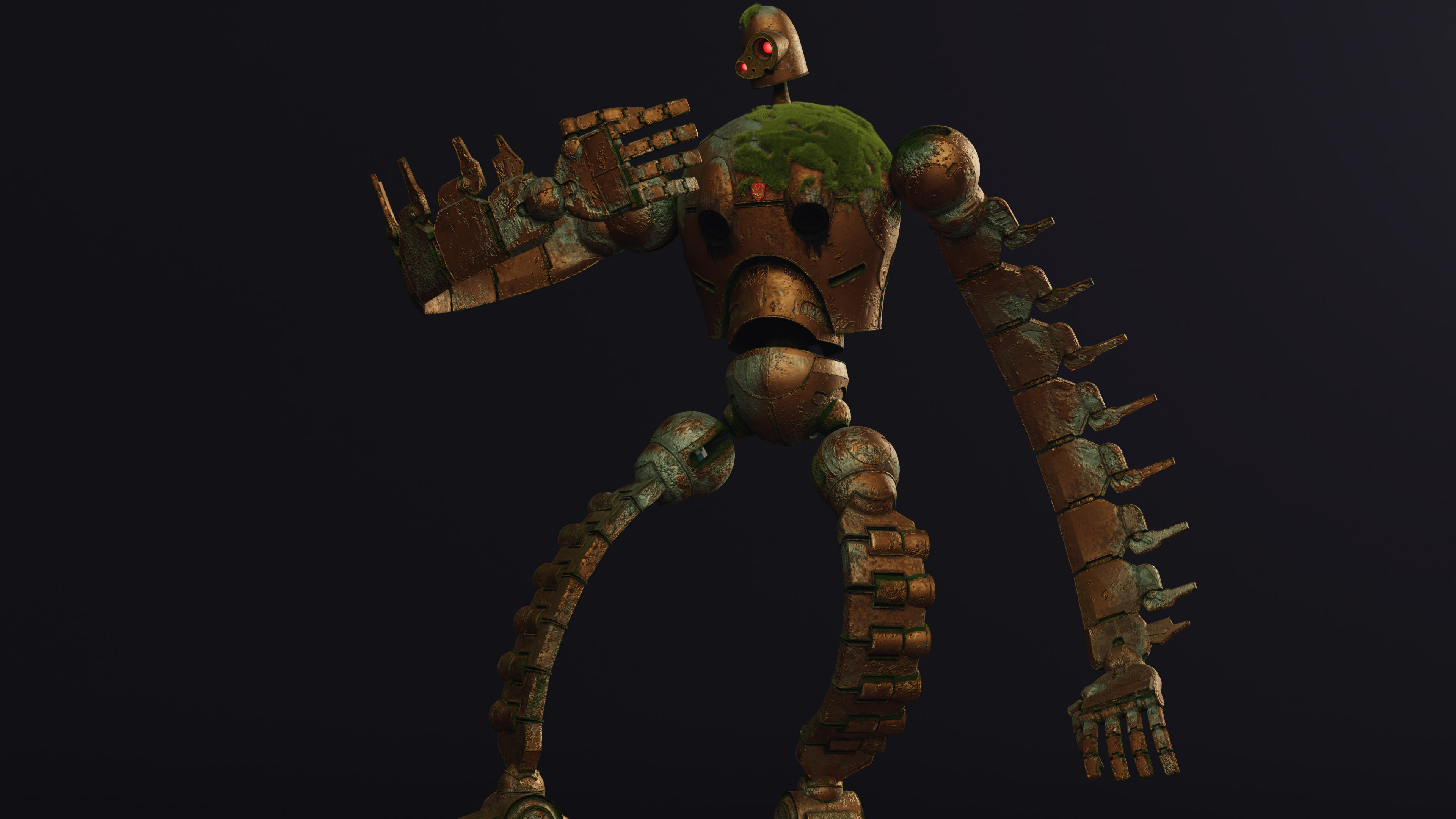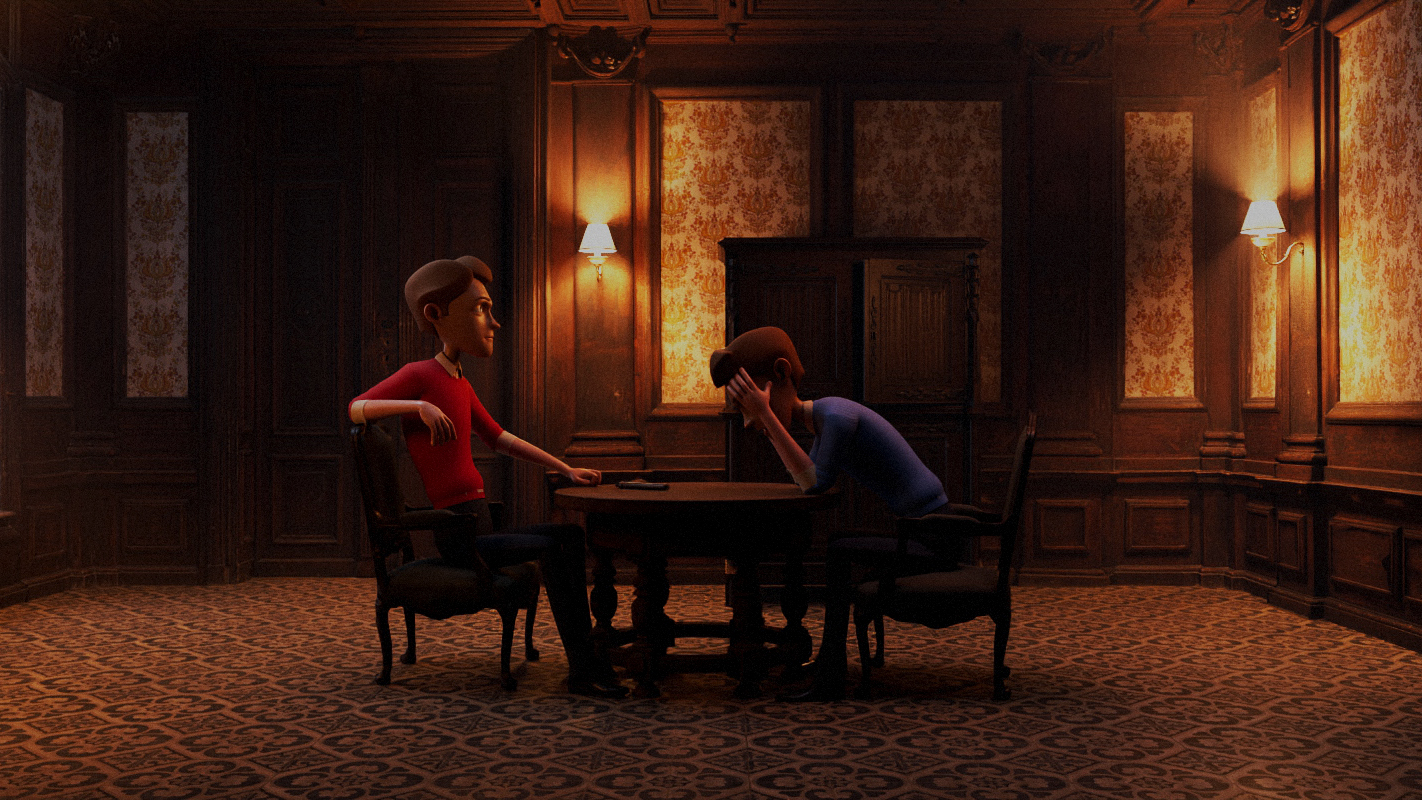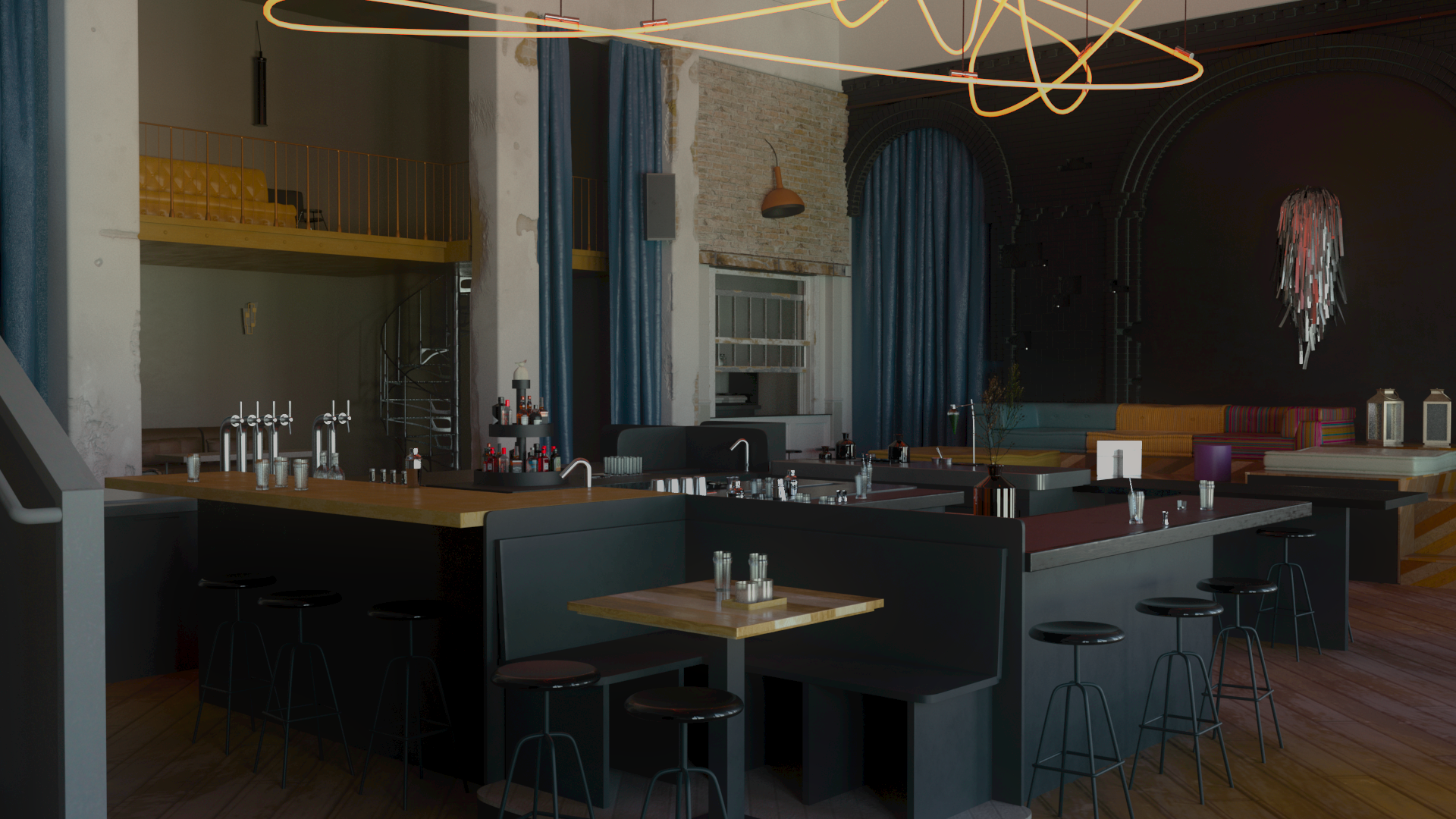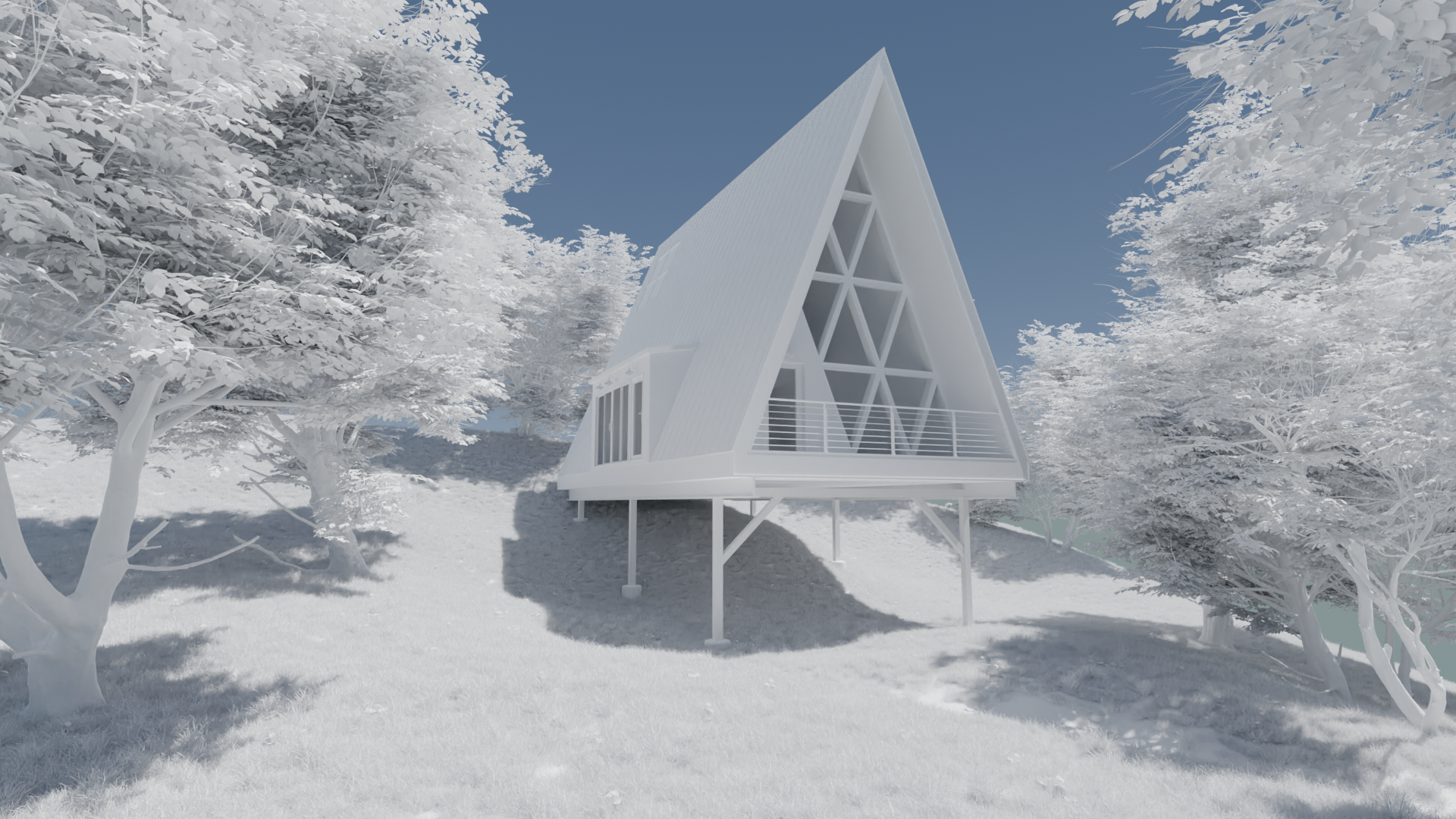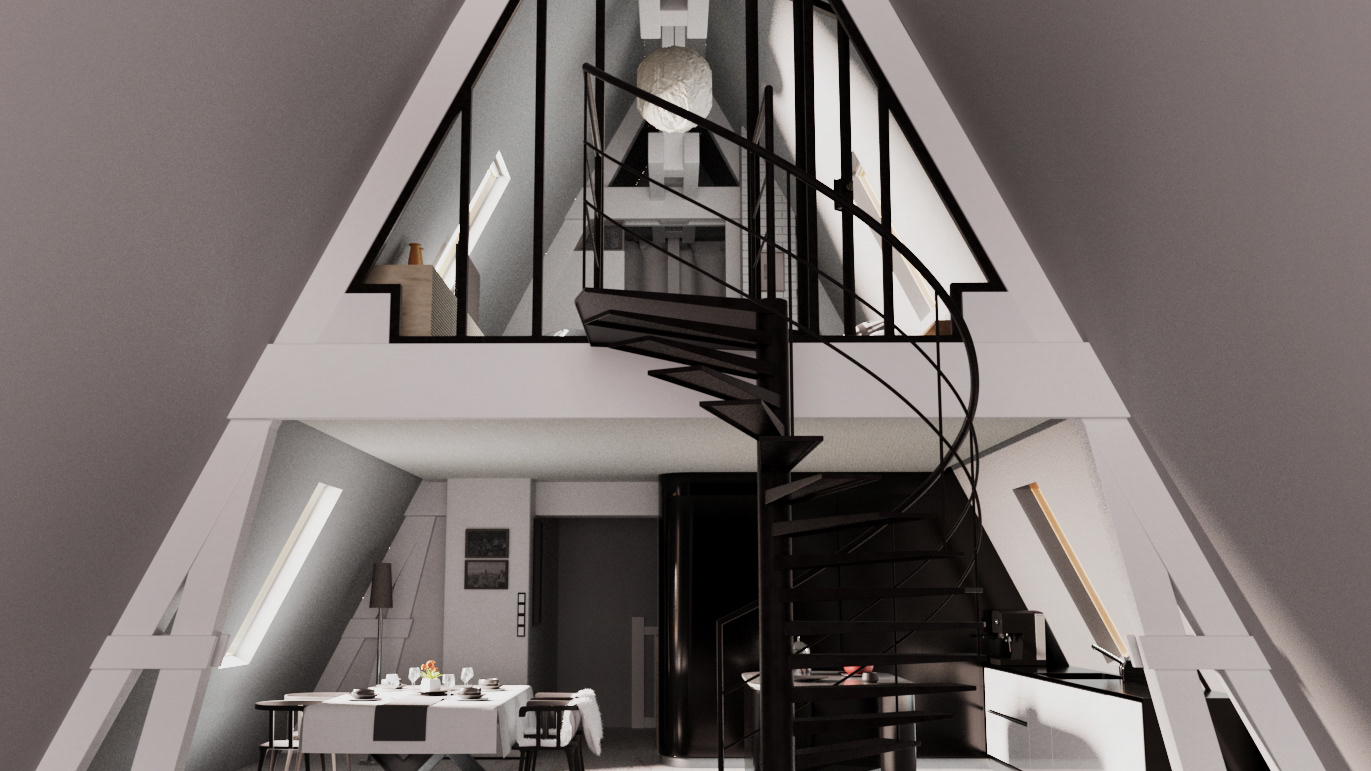For some up coming architectural visualisation projects, I wanted to create a procedural baseline environment that I could reuse and easily edit to speed up my work flow.
Method
Below is one of the node graphs used to distribute the various patches. The graph uses a black and white colour ramp to decide where the grass will be placed. Alternating grass patches are assigned a colour and placed accordingly to allow large areas of green and brown grass with both natural and convincing blending. The rest of the graphs handle the scale and rotation randomisation, the subtle animation on the grass strands and, the replacement of the grass geometry. All of this has a proxy to ensure the file runs smoothly when editing and isn't too taxing for PC hardware. Five of these graphs were combined, each handling different aspects of the field, to create the final outcome
To the right is an example of the rendered image when viewed in the viewport.
This demonstrates the blend in distributions and the use of proxies.
To the left is the geometry used after being combined into patches of foliage.
This geometry is replaced by the proxies above in the viewport.
